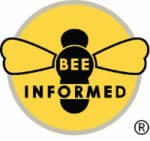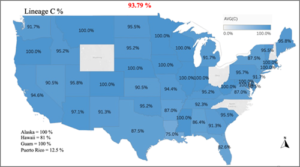The U.S. Environmental Protection Agency’s (EPA) Office of Chemical Safety and Pollution Prevention is co-hosting a virtual public meeting with the U.S. Food and Drug Administration’s (FDA) Center for Veterinary Medicine (CVM) on March 22, 2023. Additionally, EPA is opening a docket for the agencies to receive public comment on their current approach to the oversight of various products regulated as either pesticides by EPA or new animal drugs by FDA. The agencies are also announcing the availability of a whitepaper entitled, “Modernizing the Approach to the EPA and FDA Oversight of Certain Products,” which describes the current challenges and highlights the potential benefits of a modernized approach for oversight of these products.
EPA and FDA are considering how best to update their respective oversight responsibilities for specific products in an efficient and transparent manner and in alignment with each agency’s expertise, with the goal of improving protection of human, animal, and environmental health. The purpose of the public comment period and virtual public meeting is to obtain feedback from stakeholders on the whitepaper and ideas for modernizing EPA and FDA’s approach to product oversight.
Currently, EPA and FDA determine regulatory oversight of pesticides and new animal drugs based on the rationale described in a Memorandum of Understanding (MOU) between the agencies signed in 1971 and revised in 1973. Since that time, pesticide and animal drug technologies—and both agencies’ understanding of these technologies—have evolved.
For example, parasite treatment products applied topically to animals (including pets) generally are regulated by EPA if they remain on the skin to control only external parasites (e.g., collars or sprays to control fleas, ticks) and by FDA if they are ingested and absorbed systemically into the bloodstream. The agencies now understand that many of the topically administered products currently regulated by EPA do not remain on the skin and are actually absorbed into the bloodstream, highlighting challenges with the current approach and raising different safety concerns than originally anticipated.
Additionally, genetically engineered (“GE”) pest animals, which are gaining interest as a pest control tool that can reduce the need for conventional pesticides, were not envisioned 50 years ago when the original regulatory approach was developed. As agreed in the 2016 National Strategy for Modernizing the Regulatory System for Biotechnology Products (PDF), EPA and FDA have considered how to update their respective responsibilities with the goal of developing an efficient, transparent, and predictable approach for overseeing GE insects. Recently, Executive Order 14081 (PDF), issued September 12, 2022, has further directed the agencies to improve the clarity and efficiency of the regulatory process for biotechnology products, underscoring the need for continued coordination between the agencies on biotechnology. The whitepaper and public meeting only address EPA and FDA oversight.
The agencies’ current approach to determining whether EPA or FDA is the appropriate regulator of certain products does not effectively reflect or accommodate scientific advancement, and it has become clear in some cases that the current approach has resulted in misalignment between product characteristics and the agency better equipped to regulate the product. A modernized approach would ensure that the oversight of these products better aligns with each agency’s expertise, accounts for scientific advancement, avoids redundancy, better protects animal health and safety, and improves regulatory clarity for regulated entities, animal owners, veterinarians, and other stakeholders.
Public Meeting Information
The virtual public meeting will focus on the whitepaper and the following questions. We are not seeking input or comments about any specific products, other federal agencies’ product oversight, or other topics outside the scope of the whitepaper and the questions below. We are particularly interested in receiving comments from the public on the following:
What do you perceive as the strengths and weaknesses of each agency in regulating these types of products?
Are there additional or different challenges that EPA and FDA did not identify in the whitepaper?
How can EPA and FDA communicate with their stakeholders about the regulation of these products in a clearer and more transparent manner?
For regulated entities, how have you historically determined which agency to approach first to bring your product to market?
For consumers, do you know who is regulating the products you use on your animal(s)? If you have a concern or complaint about a specific product, do you know which agency to contact?
How should EPA and FDA modify product oversight to better align with each agency’s mission and expertise?
What difficulties would you envision if EPA and FDA were to modify product oversight to better align with each agency’s mission and expertise, and how could they be mitigated?
Registration
Stakeholders interested in attending the virtual public meeting must register no later than 11:59 p.m. Eastern Time on March 15, 2023. Interested persons should register online at https://www.eventbrite.com/e/547810324427 and will need to provide contact information for each attendee, including name, title, affiliation, address, email, telephone number, and if reasonable accommodations due to a disability are needed. Early registration is recommended. Registrants will receive confirmation when their registration has been received and will be provided the webcast link. Registrants should ensure they retain the webcast link email and should check their “junk mail” folder if they do not receive an automatic confirmation with the webcast link after registering.
Requests for Presenting Oral Comments
During online registration you may indicate if you wish to make oral comments during the virtual public meeting. Registrants requesting to present oral comments should provide information regarding which topics they intend to address at the time of registration. We will do our best to accommodate requests to present oral comments.
Individuals and organizations with common interests are urged to consolidate or coordinate their comments. All requests to make oral comments must be received by March 15, 2023.
We will determine the amount of time allotted to each presenter and notify participants by March 21, 2023. No commercial or promotional material will be permitted to be presented or distributed at the public meeting.
Submitting Electronic or Written Comments
Comments to the docket and/or presented at the public meeting should be limited to the questions/topics posed in the Federal Register Notice only, as described below.
Public comments will be accepted through 11:59 p.m. Eastern Time at the end of April 24, 2023.
Comments can be submitted electronically via the Federal eRulemaking Portal starting on February 23, 2023. All comment submissions received must reference Docket No. EPA-HQ-OPP-2023-0103. Received comments will be placed in the docket.
Do not electronically submit any information you consider Confidential Business Information (CBI) or other information whose disclosure is restricted by statute. Additional information on commenting or visiting the docket, along with more information about dockets generally, is available at https://www.epa.gov/dockets.
Following the public meeting and the close of the comment period, the EPA and FDA will consider comments received in determining next steps.
Event Materials
For more information, see the Federal Register Notice.
To submit a comment, visit Docket EPA-HQ-OPP-2023-0103.
WHITEPAPER: A Modern Approach to EPA and FDA Product Oversight (pdf) (264.37 KB, February 17, 2023)
https://www.epa.gov/pesticides/virtual-public-meeting-fda-and-epa-product-oversight-march-22-2023









